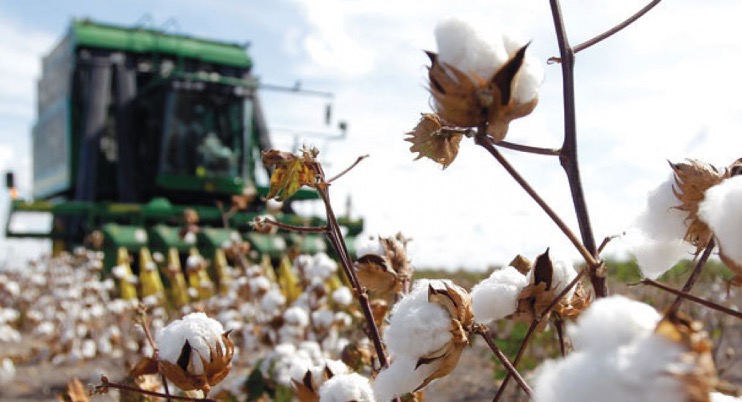The WTO ruling was based on market conditions and government programs in place in 1999-2002. This was a period of low worldwide prices for virtually all agricultural commodities and large government payments to U.S. producers of cotton and other crops. Government export credit programs were used to assist export sales and U.S. cotton had an export subsidy called Step-2 that offset the difference between higher priced domestic cotton and a world cotton benchmark price. After the WTO dispute panel ruling against the U.S. was finalized in 2005, the Step-2 program was removed by Congress and the export credit programs were changed so the interest rates charged better reflect the true risk of loans. Government price and income support programs for cotton farmers were not substantively changed.
In August of 2009 the WTO ruled on the amount and type of annual sanctions that Brazil can place on U.S. products. The $591 million of tariffs will be applied to 102 different products spread across many industries. Tariffs on agricultural products like wheat are increased from 10 percent to 30 percent, fresh and dried fruits have the same tariff increases and cotton and cotton products are faced with tariffs of 100 percent. Tariffs on lawn mowers will double from 18 percent to 36 percent, portable cell phone tariffs double from 16 percent to 32 percent, and tariffs on automobiles increase from 35 percent to 50 percent. These will go into effect unless an agreement is reach within 30 days (April 7). On March 23rd Brazil will announce $238 million in cross-retaliation on intellectual property rights. This will include “breaking patents” on pharmaceuticals and other products. For example, Brazil may choose to not pay royalties on drugs used in public health programs.
Some policy makers in the U.S. have implied that they expect Brazil to make a proposal for negotiating a solution, but there is no need for Brazil to do that. The U.S. government has that responsibility. Brazil’s position is that the U.S. should document that the offending subsidies have been eliminated or pay the tariffs as proposed. Brazil has indicated they are willing to discuss alternative solutions.
Much has changed in cotton production since 1999-2002. For those years, the U.S. harvested an average of 13.2 million acres of cotton per year, 16.6 percent of world harvested acres, produced 17.9 million bales of cotton, 19.5 percent of the world total, exported 9.1 million bales, 32.3 percent of the world total, and had domestic utilization of 8.5 million bales, 9.0 percent of world use. Government outlays for the cotton program averaged $3.0 billion per year in 1999-2002.
For the 2009 cotton crop now being marketed, U.S. cotton harvested fell to 7.7 million acres, 10.3 percent of world cotton acres, as corn and soybeans have been more profitable crops to grow in recent years. Total U.S. production was 12.4 million bales, 12.1 percent of world production, as U.S. production declined and production increased in countries like India due to improved cotton varieties. U.S. exports for this crop marketing year are forecast at 12.0 million bales, up from 9.1 million bales exported on average in 1999-2003 and 35.3 percent of world exports this marketing year. U.S. domestic use declined to 3.6 million bales, 3.1 percent of world use, as the ending of the Multi-Fiber Agreement on December 31, 2004 opened the U.S. market to more cotton products made outside the country.
Total domestic use and exports of U.S. cotton declined from an average of 17.6 million bales per year in 1999-2002 to an expected 15.6 million bales in the current marketing year. At the same time, total world use of cotton increased from an average of 94.0 million bales in 1999-2002 to an estimated 115.7 million bales in 2009, a 23 percent increase. Utilization of U.S. cotton at 15.6 million bales this year is only possible because U.S. carryover stocks will have been reduced from 10.0 million bales at the end of the 2007 marketing year to only 3.2 million bales by the end of this marketing year. Use of U.S. cotton will be a smaller part of the world market next year unless U.S. acreage increases much more than expected and yields per acre are large. According to the latest estimates from the Food and Agricultural Policy Research Institute, net government outlays for the cotton program in fiscal year 2010 are estimated at $1.7 billion, including payments on land that no longer produces cotton.
U.S. cotton production’s influence on world markets has declined; what Brazil sought has been partly achieved by market forces. U.S. cotton production is more responsive to market demands. U.S. government payments to cotton producers have declined, but not as much as the Brazilian government had hoped.
The responsibility for offering a settlement for the dispute lies with the U.S. The WTO has ruled that the U.S. did not meet its commitments and the appeals process has run its course. If the WTO’s creditability is to be maintained, the U.S. government must step forward with a proposal. U.S. groups have rightly criticized other countries for not resolving some disputes and the U.S. must not do the same.
Brazil has indicated that a settlement must include U.S. government programs related to cotton. That is a reasonable request. Speculation has been that transfer of cotton growing technology could be part of a settlement. Reductions in tariffs on Brazilian agricultural exports like ethanol, beef and orange juice are a possibility. Non-agricultural products could be part of a deal. Whatever is proposed will need the support of the House and Senate to change U.S. programs. It is time for the U.S. government to meet its obligation to find a way to resolve this dispute.

